
What is real authentic Italian Pizza?
Last updated on January 6th, 2024 at 06:55 pm
What if I tell you that when you order a pizza in Italy the one you get is not always what you may expect? Well, the Italian pizza village is huge. And the truth is that there is not just one real authentic Italian Pizza. But a lot of different Italian pizza styles. And they are all authentic and traditional!
Although pizza is one of the most famous Italian foods – if not THE most famous – I know that there is a lot of confusion around it. Being an Italian living abroad it became crystal clear to me: not everyone knows about Italian pizza. And let me be honest, this is absolutely fine. I am pretty sure that also Italians don’t always know their own traditions.
So let’s make this topic clear. Italy is an incredibly diverse country, especially when it comes to food. Traveling through it you discover that in every place you go there is a specific way of making Pizza. As you can imagine it is even hard to identify all kind of Italian pizzas in a single blog post. However I think that I can introduce you the most famous Italian pizza styles. Specifically I will try to describe at high level what is the difference between them. Are you ready to have a Italian pizza tour with me?
In this article:
- The Most Famous Italian Pizza: Neapolitan Style
- Pizza in Rome: teglia (pan), pala (peel) and Pinsa
- Pizza in South Italy: Focaccia Barese
- Pizza in North of Italy: pizza by the slice (Milano Style pizza)
- More and more Italian pizza styles
- One more pizza in South of Italy, Basilicata
At the end of this blog post you should be able to identify some of the real authentic Italian pizza. I am confident you know already some of them. But at the same time I am pretty sure you will you hear some of them for first time! Then will be up to you to decide which one attracts you more and ask me for a recipe 😉 Not only, you will be able to distinguish a true Italian pizza than imitations. Let alone you will immediately be expert when you’ll open a pizza menu in Italy.
The Most Famous Italian Pizza: Neapolitan Style
Whenever you go in the world if you talk about Italian Pizza Neapolitan style pizza is the first one that comes in mind. It’s a classic one and probably the most imitated Italian pizza. In every city you can find Pizzerias pretending to reproduce this type of pizza.
But do you really know when you can say that a pizza is a Neapolitan style pizza?
During the last years the world of Pizza in Italy changed dramatically. We are fast moving from traditional (and often wrong) way of making Pizza to new ways. There is much more attention to the process of kneading, usage of ingredients and techniques. Some of the changes are thought to be just trends. However a lot of them are real improvements. Indeed the way a Pizzaiolo Napoletano was making the Pizza 20 years ago is often outdated. Changes in the world of Pizza of course influenced also the Neapolitan Style Pizza.
The result is that today we have fundamentally two schools of thought: Classic Neapolitan Pizza and Modern Neapolitan Pizza.
Classic and modern Neapolitan pizza: what do they have common?
Before going into differences, let’s start with what they have in common. Neapolitan Style Pizza is always: soft, with pretty inflated crust, round (of course), very thin in the center, baked at high temperature in short amount of time (ideally no more than 90 seconds for the classic). Also, as a rule, it has to be soft and flexible enough to fold a slice on itself.
Neapolitan Style Pizza is always: soft, with pretty inflated crust, round, very thin in the center, baked at high temperature in short amount of time
When you have the first bite of a slice of Neapolitan Style Pizza you want to feel it melting in your mouth even without chewing (this is also known as scioglievolezza). Next you you move to the crust. Here the sensations are slightly different. You want to find a very smooth crunch of the crust surface followed again by the softness. Indeed a good Neapolitan Style Pizza crust should be “empty” inside. Inflates by air, essentially.
I can tell you that a good Neapolitan pizza dough with right flour and right kneading process is incredibly pleasant to your mouth, hard to explain. For sure, if you bite a slice and you find it too much elastic this is a sign of non perfect pizza!
But talk about Classic and Modern Neapolitan pizza in more details.
The classic Neapolitan Style Pizza
The classic Neapolitan Style Pizza is “coded”. It means that if you want to sell it as an original “Pizza Verace Napoletana” (authentic Neapolitan Pizza) you have to follow some rules. In case you are curious to know more about the regulation you can go here. Even though the regulations does not give you an exact recipe, you can have an idea on how to create one.
In fact you have to consider that there is not a single Neapolitan Style Pizza Recipe for a reason. You need to adapt the process and the recipe to different situations. For example some flours prefer to ferment for short amount of time, while others for longer time. At the same time you can decide to use different amount of yeast depending on the temperatures you have in your room. Let alone that you can bake pizza at a specific temperature and with specific hydration of the dough.
In conclusion, regulation is giving you parameters for your own Neapolitan Pizza recipe.
The modern Neapolitan style Pizza
When it comes to the modern Neapolitan Pizza then the game is changing. First of all: what is a modern Neapolitan Pizza? Well, it’s a pizza where the Pizzaiolo pays special attention to the process and ingredients used. Even though there is not a clear definition of the modern Neapolitan Pizza we can identify some aspects of it.
What changes in modern other than classic Neapolitan Pizza can be:
- the fermentation time is generally longer
- usage of controlled temperatures for maturation
- higher hydration
- often (but not always) the usage of the so-called indirect kneading method that uses biga or poolish.
- rarely usage of stiff sourdough starter
The pizza dough ball that comes out of the process is very soft and extensible. The crust is always very well inflated by the fermentation that happens in the oven. It also has to be kind of empty. One important information to keep in mind: Modern Neapolitan Pizza is the one that does not necessarily stick to the rules of the “Pizza Verace Napoletana” discussed above.
Pizza in Rome: teglia (pan), pala (peel) and Pinsa (there is no translation for it!)
Yes, also in Rome there is a traditional pizza. Actually more than one. All of them very different from the Neapolitan pizza described before. But still we can consider them real authentic Italian pizza. In fact even though pizza in Rome became a very popular topic in the last years, it is an historical tradition of the Capital of Italy. For long time Neapolitan pizza was obfuscating the traditional pizza made in Rome. Luckily since few years we are taking this traditional pizza back to the podium of best Italian pizza.
Nowadays eating a Pizza in Rome can be a very pleasant experience. First of all because of the amount of options you have. In factwe have at least four different Pizza Styles in Rome. Yes, you read it right: 4! They are:
- Pizza in Teglia (pizza in pan or sheet tray)
- Pizza alla pala (translation is Pizza on the peel)
- Pinsa Romana (pay attention, is piNSa, not piZZa)
- Pizza tonda (rounded Pizza)
Talking about each of them would probably need a separate blog posts. So I will summarize some of their aspects a bit, without going in too many details.
Pizza In Teglia (Pizza in pan or sheet tray, roman style)
This is one of the most common Pizza to make at home. The reason is easy. In fact you can knead it by hands or using a home stand mixer. Moreover it can be baked in home oven if you pay attention to baking temperatures and apply some small tricks. Also this Pizza is currently regulated. You can find a copy of the official regulation (Italian only, sorry). So let me try to give you some idea about how it is done, taking as a starting point the mentioned regulation:
- Flour: high amount of proteins (15/16%)
- Size: cooked in iron sheet pan 60×40 cm
- Thickness: between 15 and 30 mm
- crumb cell structure: big holes
- hydration: high (80%)
- Maturation time: up to 72 hours
- Cooking temperature: around 250 Celsius
- Taste: soft
- Topping: whatever
To give you an idea this is one I did recently:
Again I want to mention that you can do this Pizza at home.
Pizza alla pala (translation is “Pizza on the peel“)
The next Pizza that you can find in Rome is Pizza alla Pala. To be honest with you: very hard to do at home! Essentially you need a proper oven with the right stone. In fact one of the most important aspects of the Pizza alla Pala preparation is that it is baked directly on a super hot stone. From my point of view a standard home oven is not powerful enough to reach a decent result. However we can still do a similar one tricking the process and ingredients.
Pizza “on the peel” dough was left on a very long wooden peel before going into a very hot oven: that is why it has this name
Anyway, following are most important considerations for the pizza dough preparation:
- Flour: high amount of proteins (13/14%)
- Size: cooked directly on oven stone, around 1 meter long
- Thickness: high
- crumb cell structure: big holes
- hydration: high (80%)
- Maturation time: up to 48 hours
- Cooking temperature: 350 Celsius
- Taste: soft inside, crunchy outside
- Topping: whatever
The name “Pizza alla Pala” (pizza on the peel) tells us something about its historical roots. Indeed generally the Pizza dough is (or was) left on a very long wooden peel before going into a very hot oven. Interesting fact to know: it is often sold in huge pieces, even 1 meter long.
Pinsa romana
Here we are at the third most famous pizza in Rome: Pinsa. Once again we are in front of a special Italian pizza that is also somehow regulated. In fact there is an association that can certify who is doing a real Pinsa, from the Pizzeria to the Pizzaiolo working there. But what makes Pinsa such a specific product?
The big difference than other Italian Pizza is that Pinsa Romana is prepared with a specific flour. Actually a mix of flours.Corrado Di Marco is the person behind the Pinsa flours mix. He is owner of a Company that goes under his name and that is selling indeed the original flours mix.
In 2001 Mr. Di Marco created the now very famous Pinsa flours mix (made of wheat, soy, rice and sourdough). How is a Pinsa made? Well here you go:
- Flour: Special Mix
- Size: cooked directly on oven stone, generally in oval shape
- Thickness: high
- crumb cell structure: big holes
- hydration: high (80%)
- Maturation time: minimum 24 hours
- Cooking temperature: 350 Celsius
- Taste: soft inside, crispy outside
- Topping: whatever
As you can see the authentic Italian pizza is very diverse. If you would like, you can have a real pizza travel to explore and taste a lot of different pizza. It’s just a matter of knowing what to search for.
Pizza tonda (round pizza)
And here we come to the last Pizza that originates in Rome. Even though this is the last in my list, this is also one of the most traditional pizza in Rome: tonda romana (translated is round roman pizza). Moreover this is very different than the others, we will discover together why.
Its second name is “scrocchiarella” (crunchy). I know, it can be difficult to pronounce. This alias comes form the fact that is super crunchy and that name reminds the sound that makes when you eat it.
As I was saying before this is probably the most traditional Italian pizza in Rome. It’s coming from the very old tradition of Local pizzaiolos’ and whoever has more than 35/40 years can confirm this was the Pizza to eat when you were child in the Italian Capital.
So now that we have a rough idea about the beloved scrocchiarella let’s try to summarize its aspects:
- Flour: various, from medium to high W values
- Size: round, ~30cm (every dough ball will be of 180gr)
- Thickness: very thin
- crumb cell structure: thin
- hydration: medium/low (56%)
- Maturation time: from 6 to 24 hours
- Cooking temperature: ~300 Celsius
- Taste: super crunchy
- Topping: whatever
Let’s conclude this pizza trip in Rome. As you can see what is real authentic Italian pizza is a challenge 😉
Pizza in South: Focaccia Barese
There is one more Pizza I want to mention. It’s coming from an ancient tradition of Southern Italy. I know that it’s not exactly right to consider it in Pizza category. It should rather be an Italian Focaccia. But does it really matters? If you are making an Italian Pizza tour you definitely want to know about this special pizza (or better said: focaccia).
Also this is a pretty good Pizza to prepare at home. Indeed it’s a well known homemade pizza coming from the traditions of families. It is super soft, rich of condiments and stable over time. Focaccia Barese is perfect to be eaten even form one day to another.
What makes it to me so attracting is the topping. The traditional one has cherry tomatoes and olives literally sunk in the super soft dough. After it is cooked is such a pleasure to bite a slice. Your mouth will be delighted by the softness and almost dry sensation given by the dough that is then in contrast with the moisture of the tomato. Believe me when I say that it is an explosion of taste in the mouth.
Pizza in North of Italy: pizza by the slice (Milan Style pizza)
Let’s continue our journey to discover the real authentic Italian Pizza moving to the North. More specifically we move to Milan. In the Capital of Italian economy there is an amazing pizza to taste. It is known as pizza by the slice (in Italian: pizza al trancio) and the recipe belongs to a family that started to sell it in the middle of the 20th century.

This is a very rich pizza. The most famous place where you can eat it is Spontini in Milan. So if you are in Milan and you google for Italian pizza near me you will definitely get it 🙂
What makes this pizza very good is that it is super soft and with a lot of mozzarella on top. The feeling when you bite it cannot be described. You really need to taste it.
The good news is that this is incredibly easy pizza to prepare at home. And I shared a full recipe of pizza by the slice, Milan style in this blog. So if you are curious to know more about it or if you want to try the experience of tasting it just my version of this pizza you are now very welcome.
More and more Italian Pizza Styles
Do you think our tour for Italian Pizza ends here? If so you’re wrong! To have a comprehensive understanding of what is real authentic Italian pizza we still need to talk about more ways of doing Pizza. This time I am going to tell you about more pizzas without going into the same level of details as before. Let me know if you know what they are!
Are you ready?
- Pizza al padellino (Pizza Pan)
- Sfincione (search for it ;))
- Focaccia Genovese
- Schiacciata Toscana (typical focaccia you can find in Tuscany)
Have you ever heard about them? Have you tried them? Do you want to know how they are done? Leave a comment or contact me if you are curious. My goal in this blog post is to highlight once more how much colorful the Italian Pizza really is.
You can definitely understand why passion for pizza for an Italian is so attractive. With four simple ingredients in one single country we have so many variations!
Anyway I still want to mention one more pizza. It’s the one that made me passionate since child.
One more pizza in South of Italy, Basilicata
I want to conclude this virtual Italian Pizza tour with my roots. The last Pizza I want to talk you about is the one that my grandma was doing. I remember clearly the time when she was kneading by hands, without really taking care of hydration, exact weight of yeast and so on.
I know that process my grandma was following nowadays is outdated. Still I cannot forget the taste of the Pizza she was doing. So let me try to explain what was my Italian grandma Pizza like. Moreover I will try to explain you how it is possible to refine the process and make her pizza a modern one.
Let’s start with one fact. The one I am going to describe is the typical pizza of my hometown, Potenza. The recipe was never a written one. All the process and ingredients were simply inherited within the family. Also I can tell that I never seen, as far as I remember, my grandma weighing water. Everything was happening with experience and water was added according to the feeling. If the dough was not soft enough more water was added, just a few at a time. At the end of the process the dough was decently soft and elastic but final hydration was never higher than 55/60%. I am pretty sure about that.
The rising time was just few hours. However I will never forget we were covering the recipient of the dough with a blanket, to keep it warm. Once the dough was “ready” after fermentation it was moved in the sheet pan where it was getting a second fermentation for at least 30 minutes. Ingredients like tomato sauce were added immediately so the dough could absorb the taste.
Old vs New way of doing my family traditions Pizza
How was the pizza taste? Amazing! In the pizza dough my grandma was adding one potato and you could notice it in the taste. At first bite the softness of the pizza attracted all your attention. It was soft like a cloud! And at the same time the flavor of the potato and of the flours of the local mills was just stimulating your taste buds.
This is my hometown and old family typical pizza:
- Flour: mix of soft wheat and hard wheat flours from local mills
- Size: undefined
- Thickness: typically 2cm
- crumb cell structure: thin
- hydration: medium/low (50/60%)
- Maturation time: from 6 to 8 hours
- Cooking temperature: up to 250 Celsius
- Taste: incredibly soft
- Topping: whatever, but the most used was tomato sauce with a lot of Pecorino on top
Nowadays I am doing a similar one. The real differences are in maturation time and ingredients balance. Moreover the pizza kneading process I follow is a bit more focused on finding the right moment to consider it ready. In conclusion I am trying to stay as close as I can to the old way of kneading and simply correcting what I consider some errors.
And with that said we arrived at the end of this Italian pizza journey. I hope you enjoyed. Feel free to leave a comment. Also don’t forget to share on Social Media and subscribe to my newsletter to know more about italian pizza!
Tag:all types of pizza, authentic italian pizza, is this italian pizza, italian grandma pizza, italian pizza, italian pizza village, original italian pizza, pizza in sheet tray, pizza menu in italy, pizza pan, real italian pizza, true italian pizza, ultimate guide to italian pizza, what is italian pizza, what is pizza

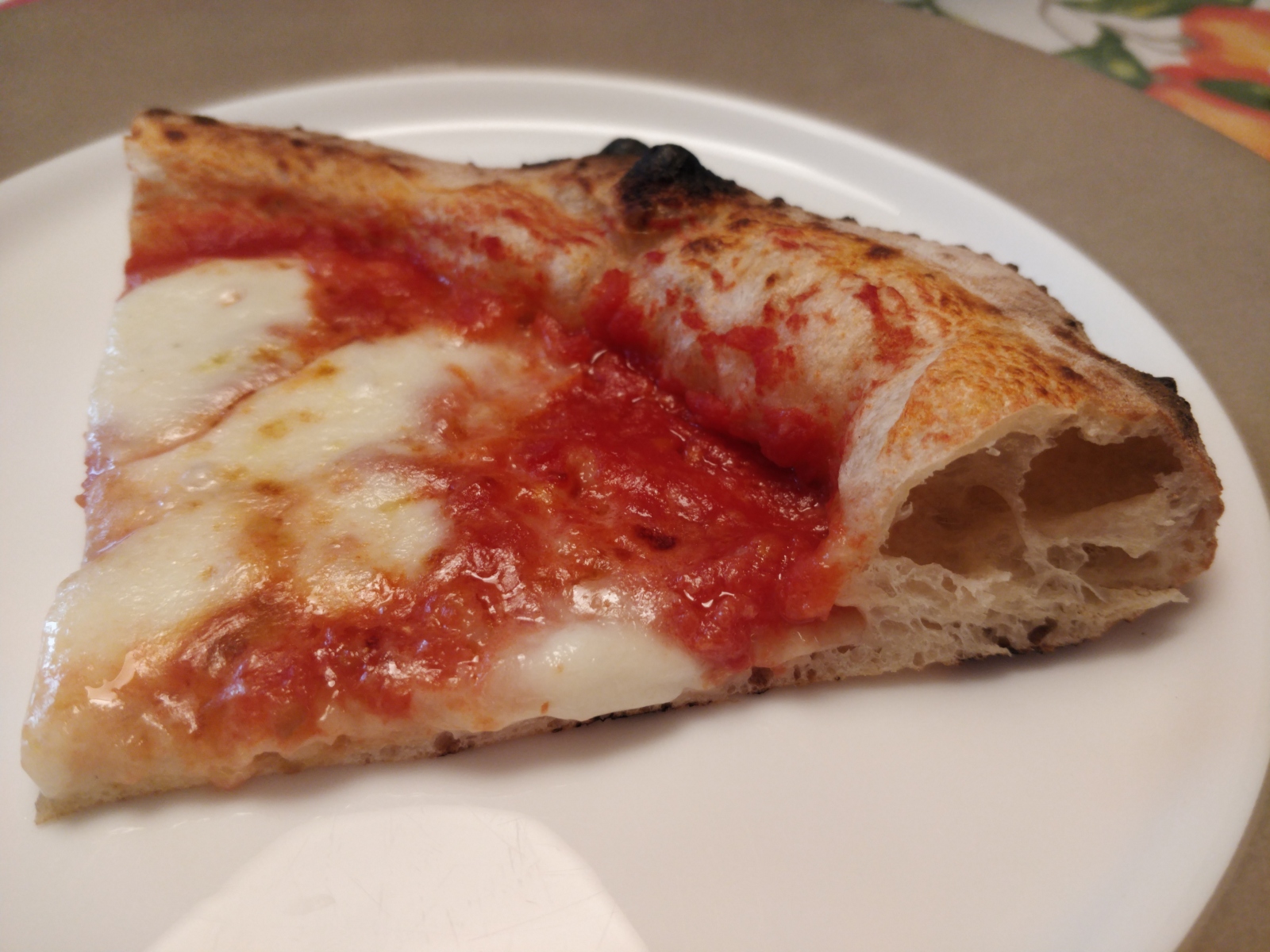

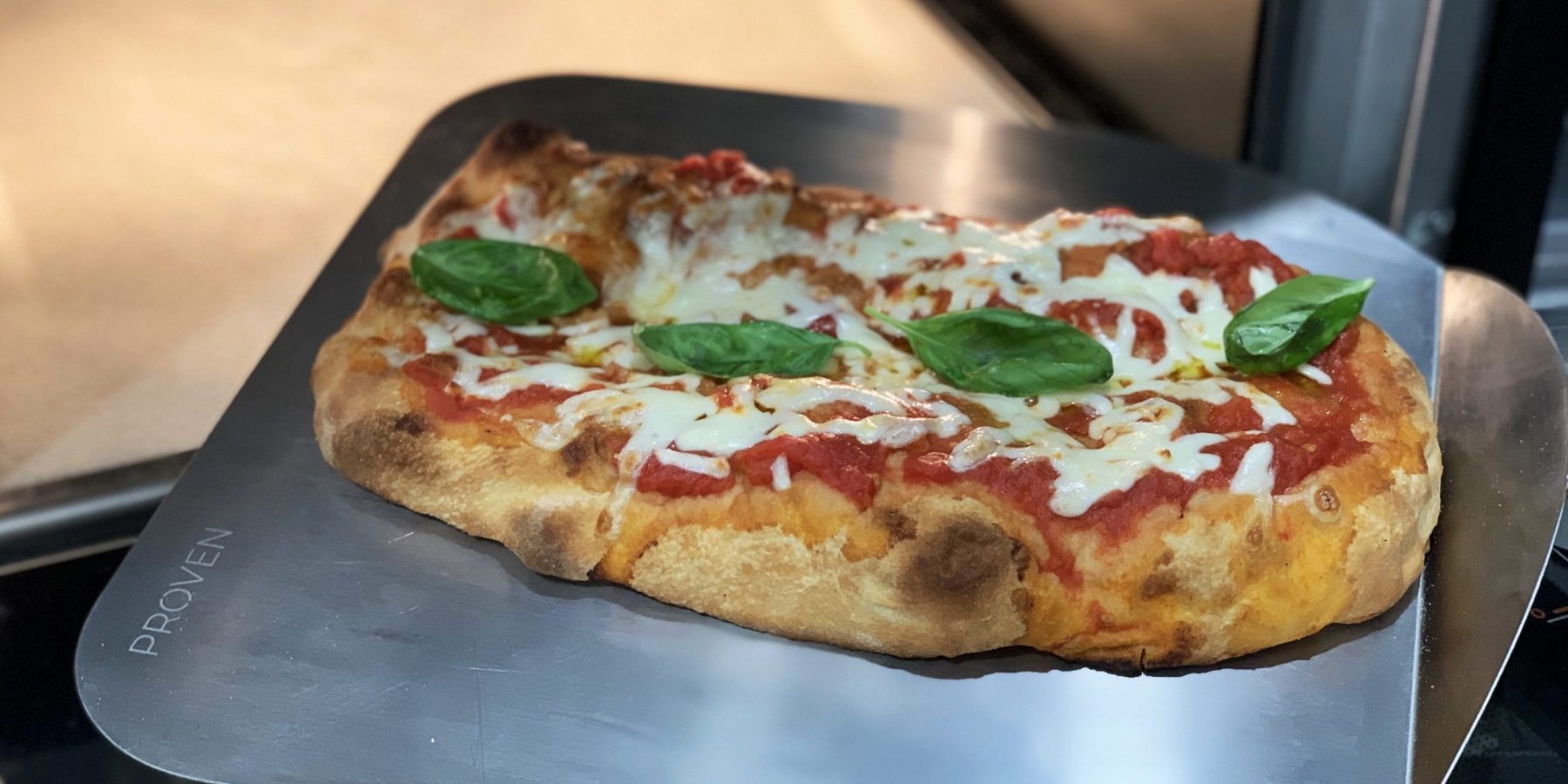
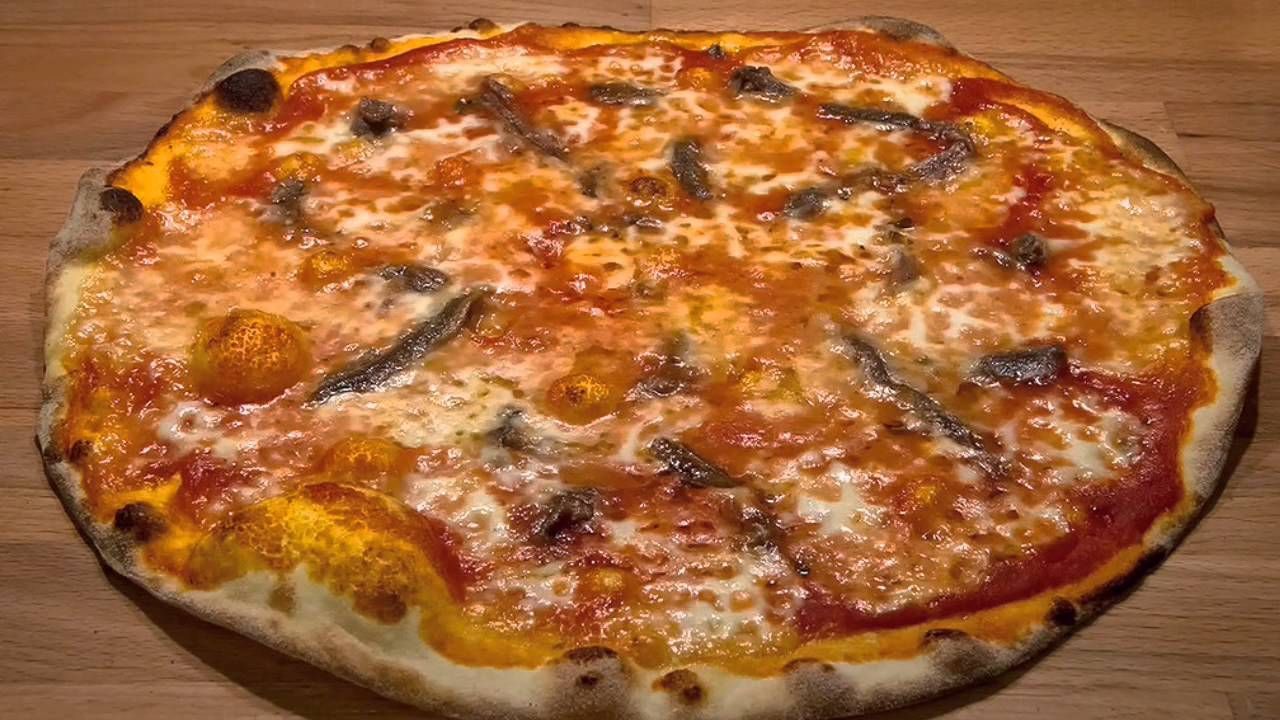
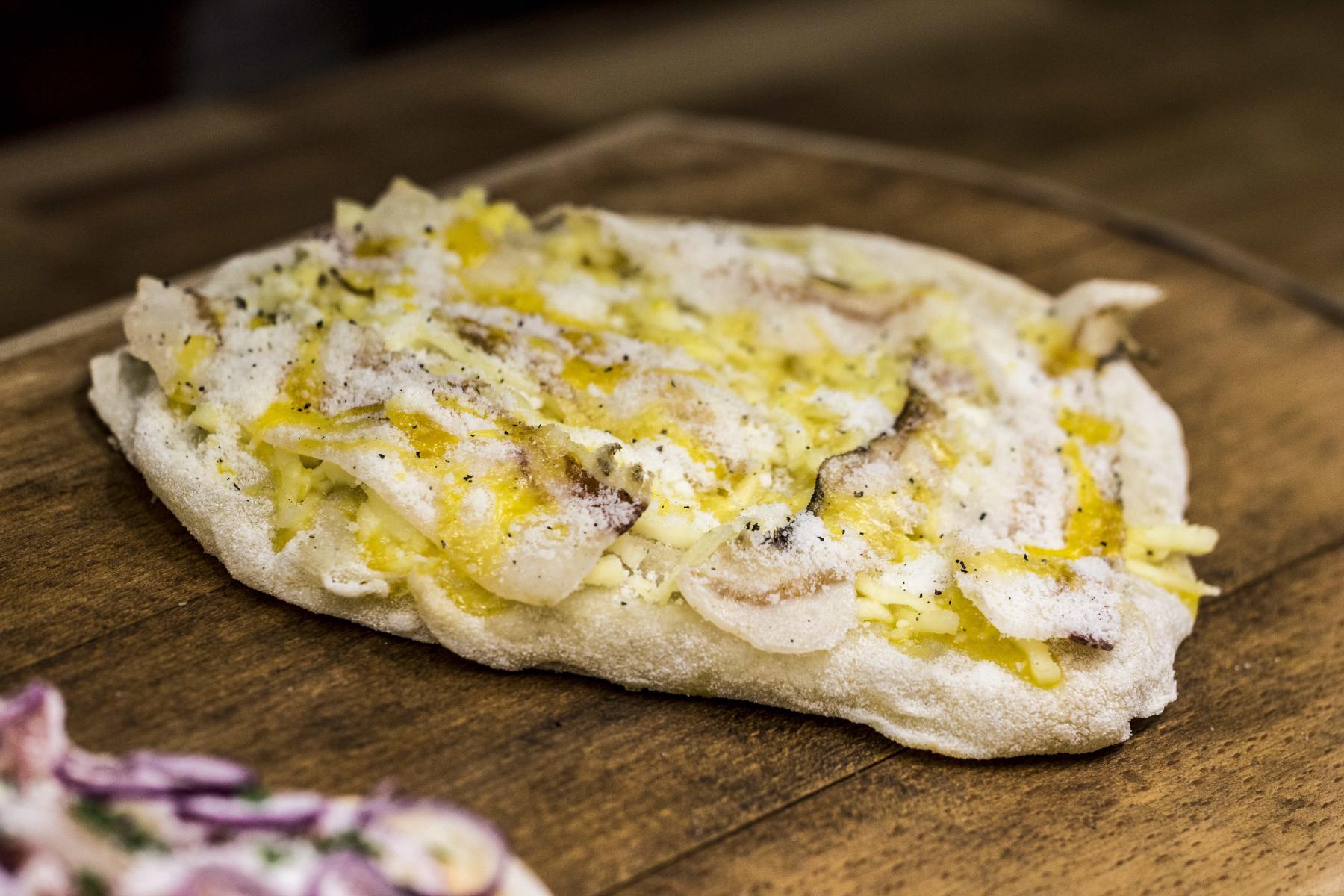
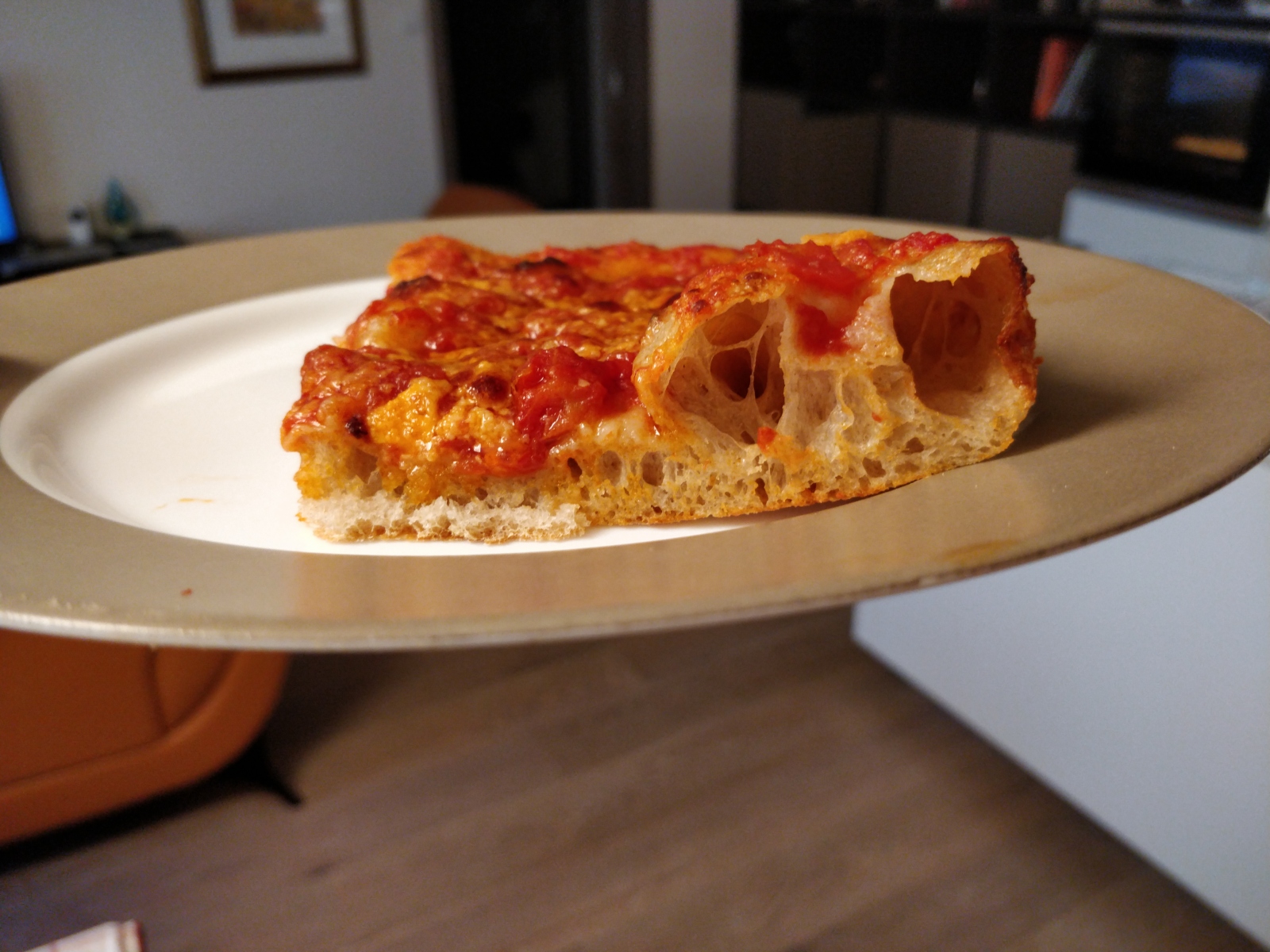
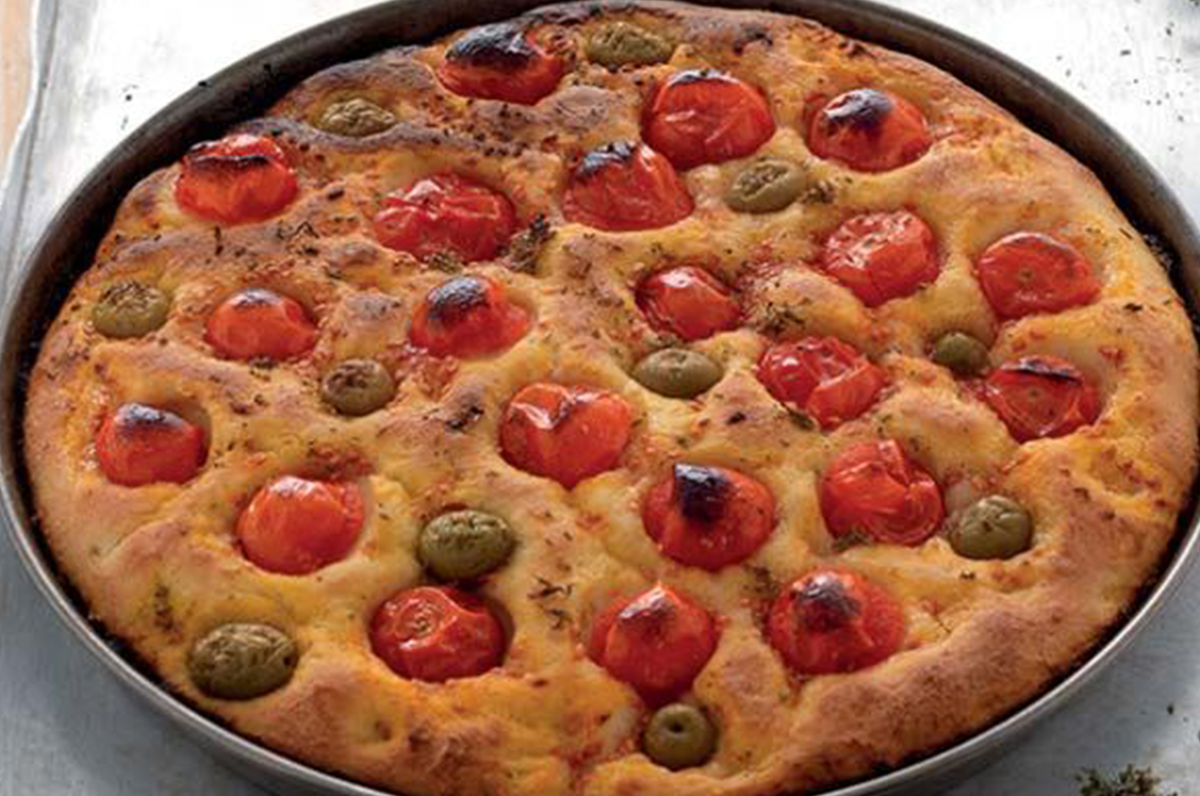
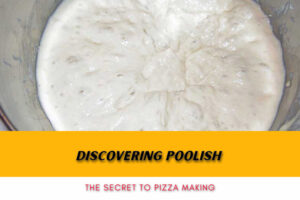


16 Comments
I love eating pizza, so I was thinking of ordering a traditional Italian one for dinner later since I’ve never tried it before. It was surely intriguing when you told us that the first bite of a Neapolitan Style Pizza will have us feeling it melt in our mouth even without chewing due to its smooth and soft crust. I’ll keep this in mind while I look for an Italian pizza restaurant I can go to later after work.
Thank you! I think you captured exactly the intent of this article 🙂 I am glad you shared this comment. Stefano
Stefano:
Where can I buy the Di Marco
Tonga Flour.
Is there a distributor in the USA?
Thanks again for the trip thru Romana pizza land, very well done.
God bless
Thanks Raymond.
I am trying to reach out to Di Marco directly to check if they have any channel distribution for USA.
So far I did not get any answer.